27+ Sample Quit Claim Deed Forms
-
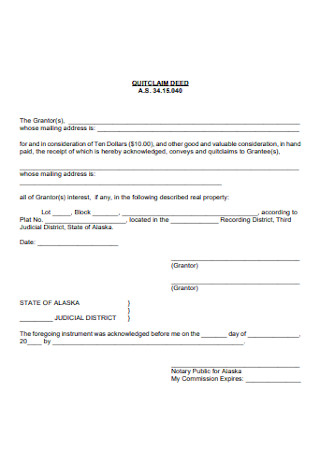
Sample Quit Calm Deed Forn
download now -
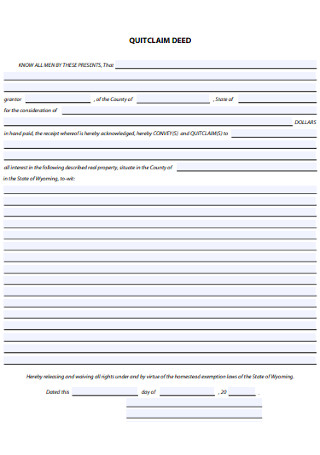
Basic Quit Calm Deed Form
download now -
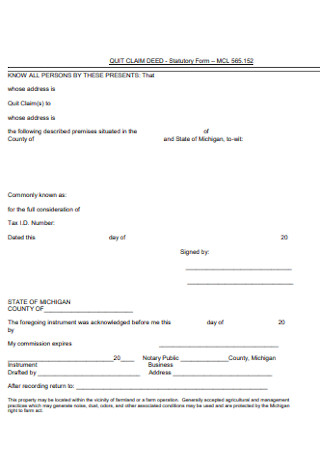
Quit Calm Statutory Form
download now -
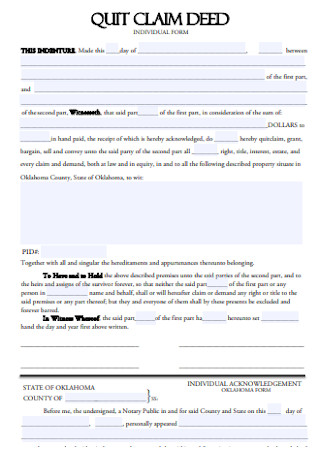
Quit Calm Deed Individual Form
download now -
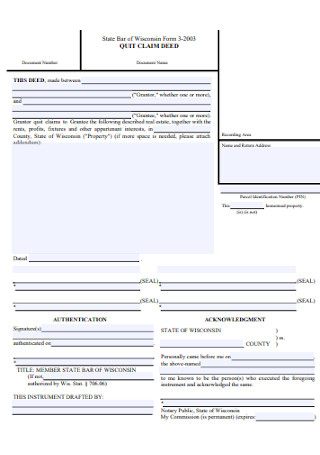
Quit Claim Deed Wisconsin Form
download now -
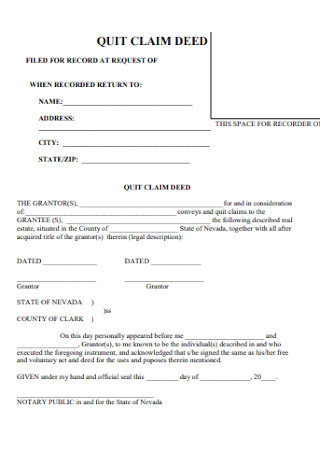
Legal Brief Quit Calm Deed Form
download now -
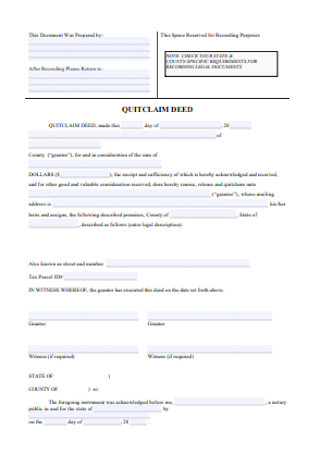
Generic Quit Calm Deed Form
download now -
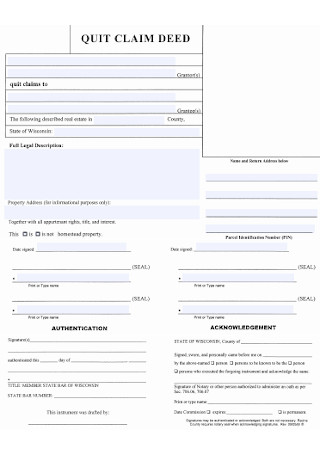
Quit Calm Deed Authentication Form
download now -
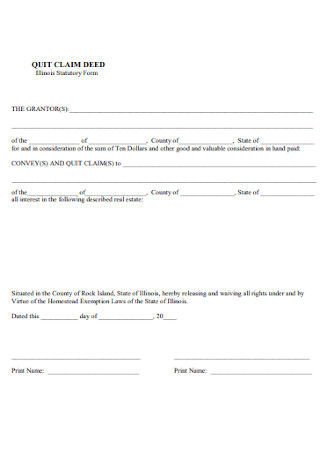
Quit Calm Deed Stamp Form
download now -

Simple Quit Calm Deed Form
download now -
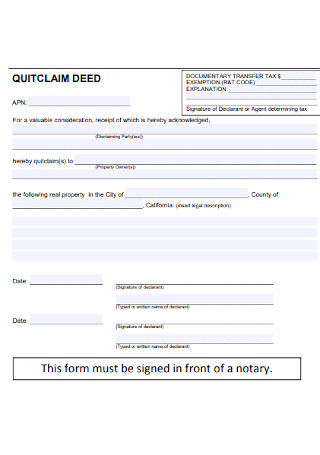
Formal Quit Calm Deed Form
download now -
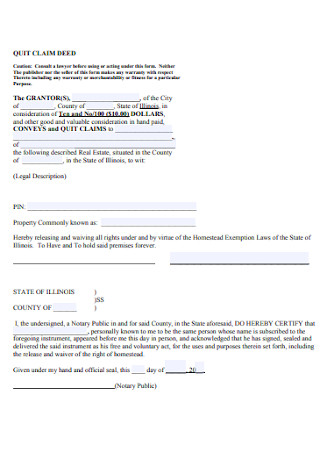
Convey and Quit Calm Deed Form
download now -
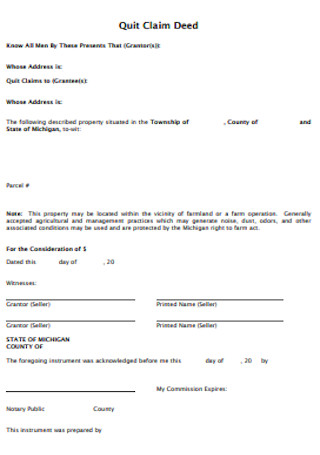
Quit Claim Deed Form Format
download now -
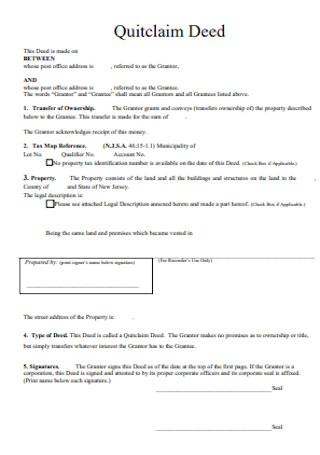
Quitclaim Deed Form Example
download now -
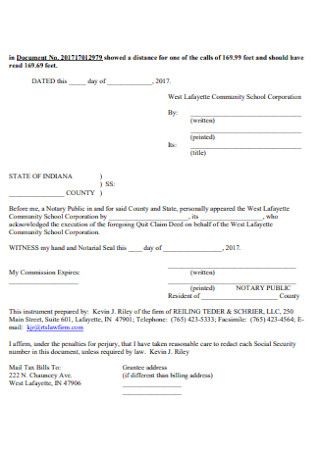
Correcctive Quit Calm Deed Form
download now -
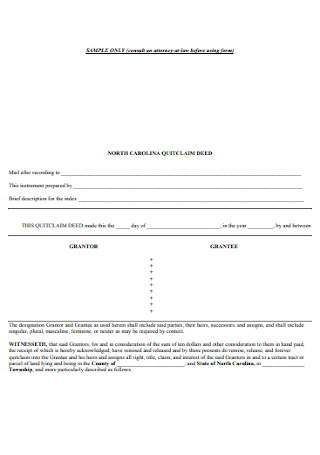
Standard Quit Calm Deed Form
download now -
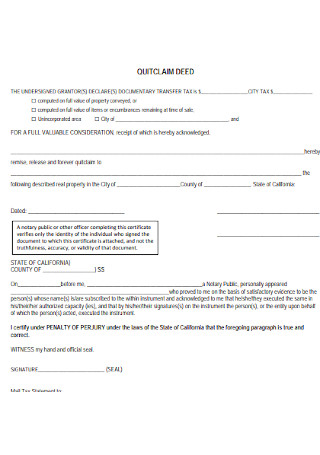
Printable Quit Calm Deed Form
download now -
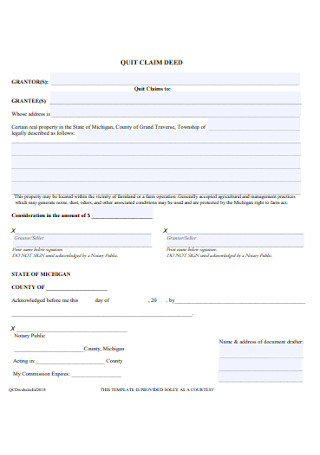
Legal Quit Calm Deed Form
download now -
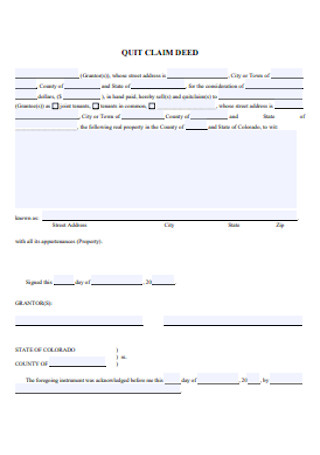
Quit Calm Deed Form Template
download now -
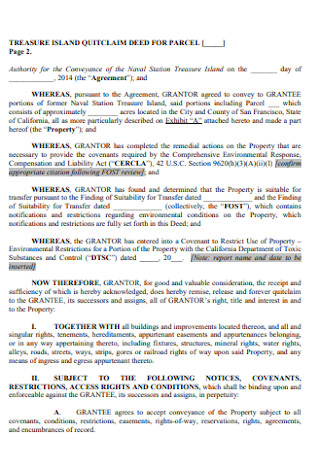
Quit Calm Deed for Parcel Form
download now -
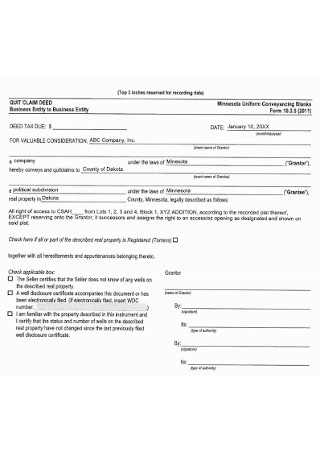
Business Quit Calm Deed Form
download now -
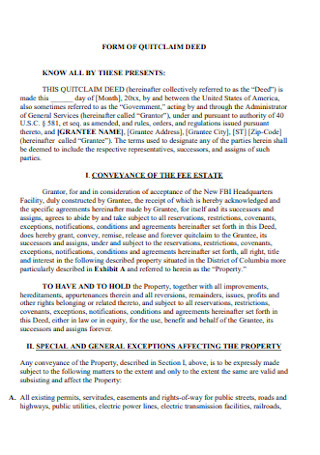
Form of Quit Calm Deed
download now -
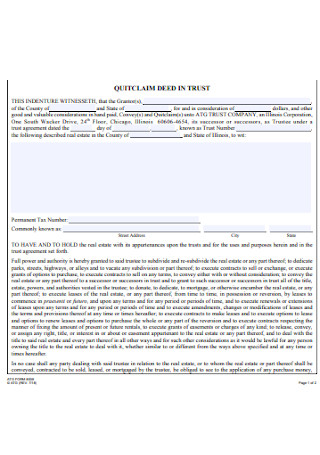
Quit Calm Deed in Trust Form
download now -
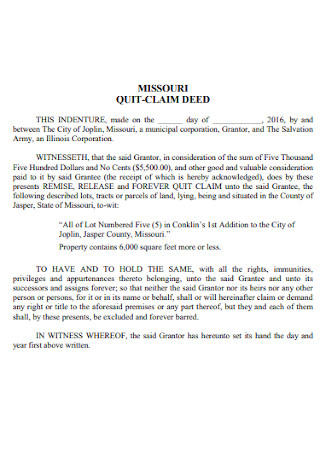
Missouri Quit Calm Deed Form
download now -
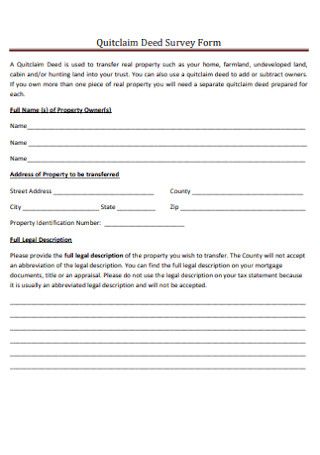
Quitclaim Deed Survey Form
download now -
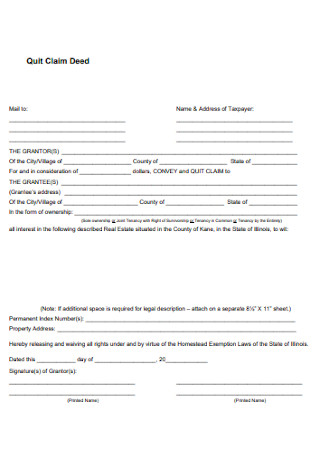
Building Quit Claim Deed Form
download now -
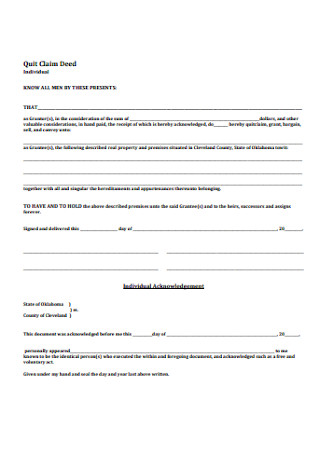
Quit Claim Deed Individual Form Template
download now -

Quit Claim Deed Form Example
download now
FREE Quit Claim Deed Form s to Download
27+ Sample Quit Claim Deed Forms
What Is a Quit Claim Deed Form?
What Are the Essential Parts of a Quit Claim Deed Form?
How to Fill Out a Quit Claim Deed Form
FAQs
Is it possible to revoke the processed quit claim deed?
Can I use a quit claim deed during a divorce?
What are other types of deeds can I utilize?
In what situations should you use the quit claim deed?
What Is a Quit Claim Deed Form?
As you may have probably known, during the global financial crisis in 2008, there was a massive drop in home sales. Lending companies and banks have convinced investors that real estate is the safest investment to make. People also believed that buying properties with small money is okay. At that time, the interest rates were so low. This case, however, brought the economy down as their prices ballooned. In the following years, the US existing home sales went back up. From 2008’s 4.12 million units, the Statista Research Department published an article forecasting that in 2022, the sales would reach 6.44 million units.
Additionally, in 2010, two years after the global financial crisis in 2008, new privately-owned housing units under construction in the U.S reached more than 400,000, which have been increasing every year. If you are in the realty properties business, most likely, you will need to know more about the Quit Claim Deed Form. For you to understand what a quitclaim deed form is, let’s discuss the quitclaim deed first. A Quit Claim Deed is considered as the fastest way to transfer a property to another person or organization. Through this deed, you, as a seller, are transferring all your interests in the property to another party.
While a quitclaim is essential for its fastness in terms of handling ownership of an object to another person, it is empirical to note that transferring your interests to another person or entity does not cover protection to the buyer. It does not warranty that another third party has no interest in the property. For instance, there is an existing lien involved or another person also has a pending claim case for this property. This deed is not illegal, because it is exactly what the document is for – to transfer all the rights of the seller alone to the buyer or another entity. If the buyers agreed to sign the deed, most likely, they have conducted a risk management plan.
To put a quitclaim deed on paper, you will need a Quit Claim Deed Form.
What Are the Essential Parts of a Quit Claim Deed Form?
Grantor: Your Quit Claim Deed Form template should identify that you, the seller, grant the rights of the property. This part of the form shows the necessary information about you, such as your name and your mailing address.
Grantee: If there is a Grantor, your Quit Claim DeedForm should also have a Grantee. This component of the form should include the necessary personal information about the buyer or the person or entity you are giving your rights to. Like the grantor field, it should have the name and mailing address of the customer or the grantee.
Consideration: Another important characteristic of a Quit Claim Deed is it involves a lesser tedious process. It does involve lesser fees and resource usage. Thus, it is mostly used for transactions that involve lesser money to none. However, you should take note as well that it does not mean that the value of the item is also less. Nonetheless, your Quit Claim Deed form should state this important item.
Legal Description: Since a Quit Claim Deed Form is a legal document, the language you use in creating one is as such. In this field, you will include the description of the property you are creating a quitclaim deed for.
Parcel Number: Speaking of being legal, your Quit Claim Deed Form should have a Parcel number, which is the number listed in your property tax statement assigned by the tax assessor.
Preparer: This is another important item of your deed form, especially, if you are hiring someone to create the quitclaim deed form for you.
Witnesses: Just like other legal documents, a Quit Claim Deed may have to include witnesses as required by your local law.
Notary: The last, but not the least item of a Quit Claim Deed Form is the notary, which serves as the verification of the authenticity of the signatures.
How to Fill Out a Quit Claim Deed Form
As a seller, it is empirical that the Quit Claim Deed Form that your customer signs during the transaction are done properly. It will save you both from any possible problems in the future.
Step 1: Make Sure the Blank Form Covers Everything.
Before you even make your meeting agenda, get the right template for your transaction. Do you really need a quitclaim deed for the transaction or you need another type of document. Once you confirm that it is the right form for the transaction, check if the fields match the type of item you are selling. Make sure that all the necessary fields are there.
Step 2: List the Parties Involved.
Needless to say, these items are a few of the most important items of the Quit Claim Deed Form. List down the names and the mailing address of the grantor, which is you, and the grantee, which is the buyer. Note that the grantee can be an organization or a person.
Step 3: State the Consideration.
We have mentioned in the previous section that a Quit Claim Deed is mostly used for transactions that involve little to no money. However, even if there is no money involved, it is empirical to put at least a small amount of money in the form to make it valid. You should state these payment details in the Consideration.
Step 4: Describe the Property Involved.
Aside from the payment, you should mention the information about the product you involve in the transaction. To make it legal, you should state the specifications of the product in a way that can specify that it is exactly the item. For instance, you are selling a few acres of land. To make the deed legal, you should mention the identification of the property. In this case, you need to state the parcel number, which you can see in your property’s tax statement.
Step 5: Don’t Forget the Signatures.
At this point, you are almost done with the form. You have the details that you need, but you still have to prove its authenticity. Make sure that the buyer signs the deed. Depending on the laws in your state, you may have to gather witnesses for your transaction. If that’s the case, have them sign the form. Mostly, laws would require 0-2 witnesses for these transactions. A little piece of advice? You should include all the people involved in the deed in your contact list so that you can easily reach them if additional steps involving them have to be performed.
Step 6: File the Deed.
At this point, the form has been completely filled out and signed. Make a quick check to the form and go to your local County Clerk or Registry Office to have the deed recorded. Then, send a copy to the grantee.
FAQs
Is it possible to revoke the processed quit claim deed?
No, it is not possible to cancel or revoke a quitclaim deed. Unlike most authorization forms, once a Quit Claim Deed is sent and processed to the local County Clerk or Registry Office, the transaction is deemed permanent. However, if the grantor agreed to get the rights back with the grantee, they can file it to the court. In this process, the roles of the seller and buyer are reversed. The seller is now the grantee and the buyer is the grantor.
Can I use a quit claim deed during a divorce?
It is quite common for married couples to own conjugal properties. It means that the properties are both owned by both parties. However, the problem of these arrangements is when the two parties decide to separate. In this case, a quitclaim deed is the fastest option if both parties agree. Otherwise, an interference of the court is necessary. Once a quitclaim deed is applied to conjugal properties, the grantee party can sell or can perform transactions involving the property without the consent of the other party.
What are other types of deeds can I utilize?
If you decide to make a deed for a certain transaction, you should know the functionalities that you need to maximize the use of a deed. You should know the benefits and drawbacks of using such a type of deed. In this section, we will discuss the most important things that you need to know about each deed that you may have to use aside from the quitclaim deeds.
Special Warranty Deed
Whether you are from South Carolina, Florida, Georgia, Indiana, or any state, a Quitclaim Deed or any quitclaim deed is essential in many ways, but you may need a special warranty deed for certain transactions. A special warranty deed is more effective if you involve a big amount of money, such as trusts, tax sales, and commercial real estate sales. If you want to know more about real estate sales, you may want to begin by learning more about basic real estate sale contracts. Unlike a Quit Claim Deed, a special warranty deed warrants against the defects done by the grantor. You should know, though, that the warranties only involve the defects done at the time when the grantor owns the property. If the property was owned by someone else before the seller, the defects will be assessed and the current seller should not take responsibility if the defects are done by the previous owner.
General Warranty Deed
Another deed that you can choose to apply for a transaction is a General Warranty Deed. Just like a Special Warranty Deed, this deed can be more useful when a big amount of money is involved. The difference is its warranties cover all the defects, including the ones that occurred during the time that a seller doesn’t own the property, which you can use as your advantage in your business and marketing plan as well. A General Warranty Deed is mostly used when you are selling a house or a mortgage.
Aside from these Three Common Deeds, you can also use the following for your transactions.
- Grant Deed – In California, along with a Quit Claim Deed, you can also let the customer fill out a Grant Deed Form to assure them that you didn’t give the property to someone else, nor it does not have any pending liens.
- Bargain and Sale Deed – This type of deed is almost similar to Quit Claim Deed, only that it states that you have a title of the property. However, just like the Quit Claim Deed, this deed does not give the buyer warranties. This is mostly used if you are dealing with a non-relative buyer/rights recipient.
- Lady Bird Deed or Enhanced Life Estate Deed – If you don’t have anyone else that will inherit your property in the future, you might as well sell the property and at the same time retain the benefits of having the property while you are still alive. It is possible through a Lady Bird Deed. In Enhanced Life Estate Deed, you are transferring the ownership of your property, but the new owner can only get the full rights once you are dead.
In what situations should you use the quit claim deed?
Just like a development plan that you create for your business in Michigan, Texas, Ohio, or Virginia, you can use Quit Claim Deed in many situations and if you are wondering which situations, you are in the right section. Below are the common situations where a Quit Claim Deed is mostly used.
- Marriage – If you have a property that you intend to share with your husband or wife, a Quit Claim Deed is mostly your best option because it’s faster and you trust each other so you don’t need very specific warranties.
- Family – When you plan to have family members of yours to inherit or buy your properties, most likely, you have each other’s trusts. Thus, he or she does not have to undergo the tedious steps in transferring the rights to the other family member.
- Business – If you are selling a property to your child company, since you are already connected to the company, you may choose to use this type of deed.
Other situations where a Quit Claim Deed can be useful is when a buyer volunteers to take responsibility for the risks, probably after conducting a risks analysis or if you intend to transfer your property to a trust.
Quit Claim Deed Form is a very useful document, which we have covered in this article. However, just like contractor agreement and other business documents and tools, it has its limitations and scopes, which may limit your ability to perform things. Thus, before using a certain tool, make a habit to know it to save yourself from unnecessary struggles in the future. It does not guarantee that your transactions will be spot-free, but it will be of great help if you cover most of the possible struggles.
